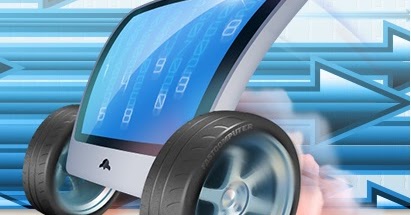
- #FASTCOMPUTER LINUX INSTALL TO HARD DRIVE DRIVERS#
- #FASTCOMPUTER LINUX INSTALL TO HARD DRIVE FULL#
- #FASTCOMPUTER LINUX INSTALL TO HARD DRIVE PC#
On some cases, we separately select the first, second, and third boot devices. The method to change the boot order can also differ between the various BIOS and UEFI interfaces. Only on some very old BIOS software, we need to enter the Advanced BIOS features.īut, even some recent systems might have the boot options hidden inside a different menu, such as "System Configuration."

On most BIOS interfaces, it's easy to locate the boot options screen. Pressing this key will bring up a menu, through which we can both select Boot menu or enter the BIOS / UEFI setup.įind the boot options and change the boot order They feature a one-key recovery key, usually next to the power button. Some recent laptops, usually from Lenovo, don't use any keys on the keyboard to enter the BIOS / UEFI. Usually, the key to enter the setup is DEL or F2. If our motherboard doesn't have a boot menu, we need to enter the BIOS / UEFI setup and change the boot order through there.

Hot to change the boot order in the BIOS / UEFI We don't want to boot to the installation media again after the first reboot. This is perfect when installing an operating system. The significant advantage of the boot menu is that it's a one-time deal it will only change the boot order for a single boot. Next time we reboot the system, the boot order will be restored to the default.
#FASTCOMPUTER LINUX INSTALL TO HARD DRIVE FULL#
Other motherboards list the full device names, so we have to select TSSTcorp CDDVDW SH-222AB to boot from DVD.Īlso, most motherboards with UEFI will list USB devices twice, one plain and one as UEFI, as we see with the KingstonDT 101 USB thumb drive. It's usually best to select the UEFI option in those circumstances, especially for modern OSs, such as Windows 8.1 and 10. Some motherboards list the devices with their generic names. If there is a "+" sign, there are sub-options we can access by pressing "+" on the keyboard, to select a specific Hard Drive or Removable drive.
#FASTCOMPUTER LINUX INSTALL TO HARD DRIVE PC#
We just select the one we want and hit enter.įor USB devices to show up on this menu, they need to be connected to the PC before we turn it on. or the OS starts booting, it's too late, we have to reboot and try again.Īfter successfully hitting the boot menu key, we are presented with the bootable devices. The manufacturer's logo could show for only one second, or even less on a fast computer. Now that you have a basic understanding of the “vi” command, the next step is to edit FreeBSD configuration to help setup a desktop environment.Pressing the key in time is important. If you want to save changes use “:wq” otherwise use “:q!” to quit without saving changes. Then use one of the save/quit commands to quit editing the file. Once you are finished use “esc” to end the last command. If you have already used the “a” command to enter text, the “x” key will simply enter that character unless you first esc the command. A handy cheat sheet for vi commands can also be found above.īefore entering a command the “esc” key must be used. While this page may be overwhelming at first, don’t worry! Just focus on the commands that let you enter and delete text, “a” and “x”. The most powerful tool FreeBSD includes for this process is the “vi” command. To continue working with FreeBSD and configuring system tools, a general understanding of text editing will be needed. You are now ready to start using your FreeBSD system and install a desktop environment! Once you are happy with your changes, press “ + ” and press “a” when given the option to save changes.)Īdd these two lines to the bottom of the file and save your changes: (To edit the file using ee, navigate using the arrow keys and type the text you need to enter.

Open the startup service configuration file located at /etc/rc.conf using the built-in text editor ee $ pkg install emulators/virtualbox-ose-additions Install the VirtualBox guest addition packages: To fix problems that may arise later on as a result, log in and enter these lines at the prompt (ignoring the “$”):
#FASTCOMPUTER LINUX INSTALL TO HARD DRIVE DRIVERS#
VirtualBox comes with virtual graphics/audio drivers that FreeBSD may have trouble identifying. You now have FreeBSD installed on your machine! Click “Start” again and the FreeBSD virtual machine should now boot in its configured form. Select “OK” to save your changes and return to the main VirtualBox application.


 0 kommentar(er)
0 kommentar(er)
